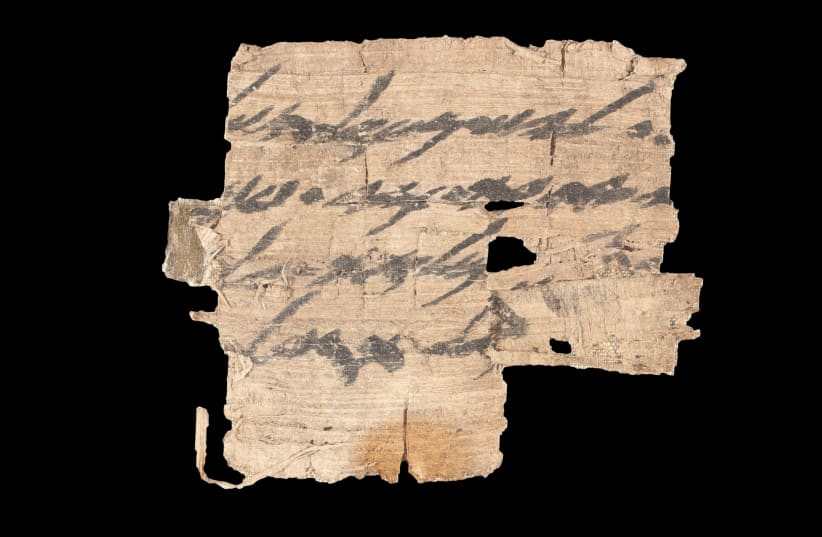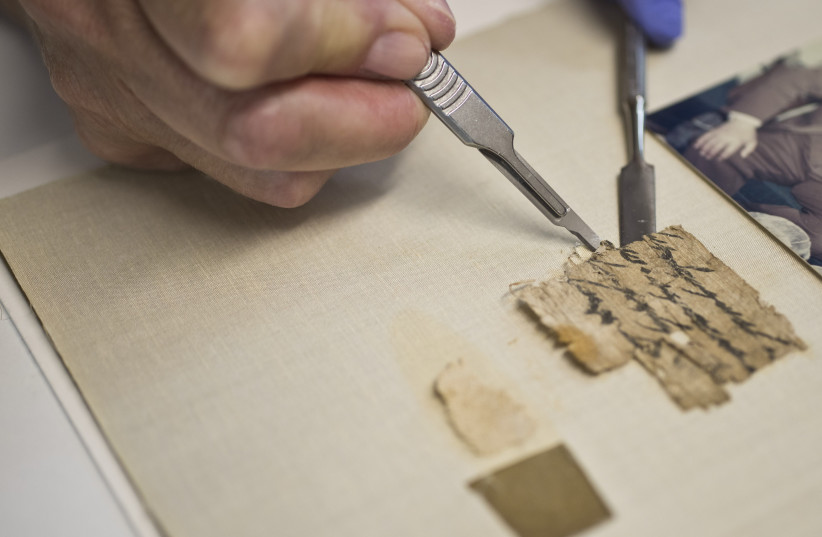A letter written in ancient Hebrew dating back to the First Temple period, around the sixth or seventh century BCE, was returned to Israel on Wednesday. It was probably found in the Judean Desert caves.
Archaeologists dated it to the same period as two other documents in the Israel Antiquities Authority’s Dead Sea Scrolls collection. The script on the extremely rare ripped document starts with “To Ishmael send...”, hinting that it is a fragment of a letter.
According to a Wednesday press release, the letter was returned thanks to a joint operation by the Antiquities Theft Prevention Unit of the Israel Antiquities Authority, the Culture and Sport Ministry and the Jerusalem Affairs and Heritage Ministry.
Who are the archaeologists behind the research?
Dr. Ada Yardeni, an Ancient Hebrew Script scholar, who had been working on the document, died in June 2018 and Prof. Shmuel Ahituv was delegated to complete its publication.
According to the announcement, Ahituv was surprised to find a photograph of a rare and unknown document from the First Temple period with Yardeni’s decipherment. This all led to the joint operation to find the rest of the original document which were traced to a man in Montana, USA, who owned the parchment.
He explained that it was given to his mother, on a visit to Jerusalem in 1965, by Joseph Sa’ad, a well-known antiquities dealer from Bethlehem. Sa’ad was known to have sold thousands of Dead Sea scroll fragments over the years.
The man was persuaded to hand over the fragment to Israel after visiting the Israel Antiquities Authority Judean Desert Scroll Department’s Conservation Laboratory in Jerusalem.
What's in a name?
“The name Ishmael mentioned in the document, was a common name in the biblical period, meaning ‘God will hear,’” Ahituv said.
“It first appears in the Bible as the name of the son of Abraham and Hagar, and it is subsequently the personal name of several individuals in the Bible, including Yishmael ben Netanyahu, who murdered the governor Gedaliah ben Ahikam.
“It also appears as the name of officials on paleographic finds such as bullae (clay stamp seals) used for sealing royal documents in the administration of the Kingdom of Judea, for example, the bulla reading, ‘To Yishmael, son of the king,’ ” he added.
Director of the Israel Antiquities Authority Judean Desert Scrolls Unit, Dr. Joe Uziel said: “Towards the end of the First Temple period, writing was widespread. This is evident from many finds, including groups of ostraca (documents written on pottery shards) and stamp seals with writing discovered in many ancient urban settlements.
“Each new document sheds further light on the literacy and the administration of the First Temple period,” he added.
The story about the document will be presented at the First Judean Desert Conference taking place at the Bible Lands Museum in Jerusalem next week. The conference is open to the public, without charge.

